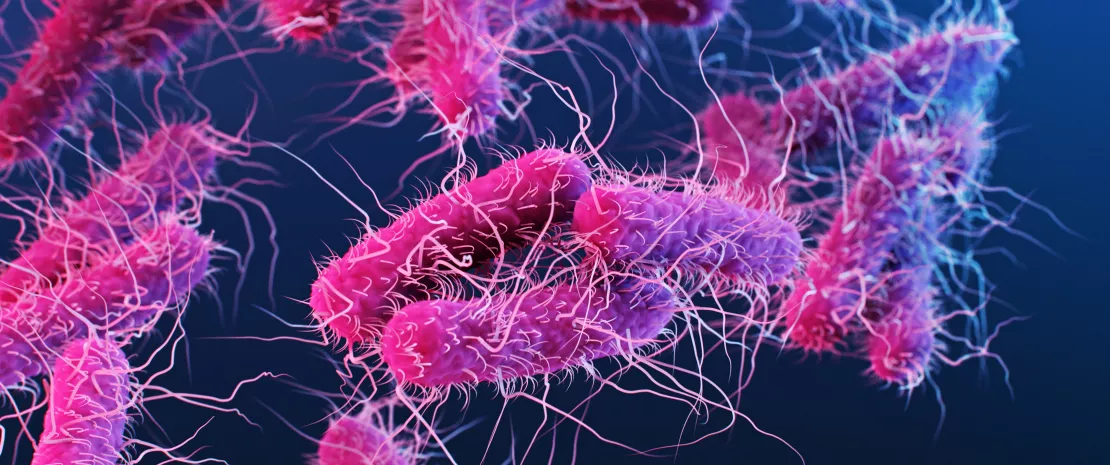Predicting the risk of necrotizing enterocolitis using the gut virome
A convergence of viral communities of the gut in preterm infants developing necrotizing enterocolitis ten days before disease onset opens up the possibility of early identification of subjects at risk.
Sources
This article is based on scientific information

About this article
Necrotizing enterocolitis (NEC) is a serious and sudden necroinflammatory complication in preterm infants. Previous studies suggest an involvement of the gut microbiota in its occurrence, while others point to a possible involvement of certain viruses. However, the gut virome of preterm infants remained poorly understood until now. An American team therefore monitored the development of the virome in preterm infants over time in order to identify the factors that could influence the development of NEC.
Convergence of viromes 10 days before disease onset
In this longitudinal metagenomic study, the gut viromes of 23 preterm infants were analyzed by next-generation sequencing during their first 11 weeks of life, i.e. between 25 and 36 weeks postmenstrual age. Nine of these children developed NEC at a median (sidenote: Postmenstrual age age corresponding to the number of weeks of gestation at birth plus the postnatal age. ) of around 31 weeks; four did not survive.
2-7% of infants Necrotizing enterocolitis affects 2 to 7% of infants born at less than 32 weeks of gestation in developed countries,...
22 to 38 % ...with mortality ranging from 22 to 38%.
The results show that the gut virome of preterm infants displays high inter- and intra-individual variation over time. This observation is identical whether or not the infants developed NEC. On the other hand, a particularly interesting result was that the gut viromes of infants who developed NEC began to converge in terms of
(sidenote:
β diversity
A measure indicating the species diversity between samples, it allows to assess the variability of microbiota diversity between subjects.
Hamady M, Lozupone C, Knight R. Fast UniFrac: facilitating high-throughput phylogenetic analyses of microbial communities including analysis of pyrosequencing and PhyloChip data. ISME J. 2010;4:17-27. https://www.nature.com/articles/ismej20099
)
10 days before disease onset. This convergence was expressed by enrichment of specific viruses and the loss of other viruses.
With respect to bacteria, bacterial beta diversity in these infants was stable during the 25 days preceding NEC onset. However, over this period, the abundance of Gammaproteobacteria, Bacilli, Enterococcaceae, Enterobacteriaceae and Veillonellaceae differed between case samples versus control samples.
Identifying at-risk children
There are therefore viral signatures associated with specific virus-bacteria interactions which appear around ten days before NEC onset. This suggests the involvement of the gut virome in preterm infants in the pathogenesis of this complication. As geography is a factor that can influence the microbiome and the virome, these results obtained in a single hospital in the United States will need to be confirmed in other populations. Nevertheless, they open up the possibility of early identification of infants at increased risk of developing NEC.










